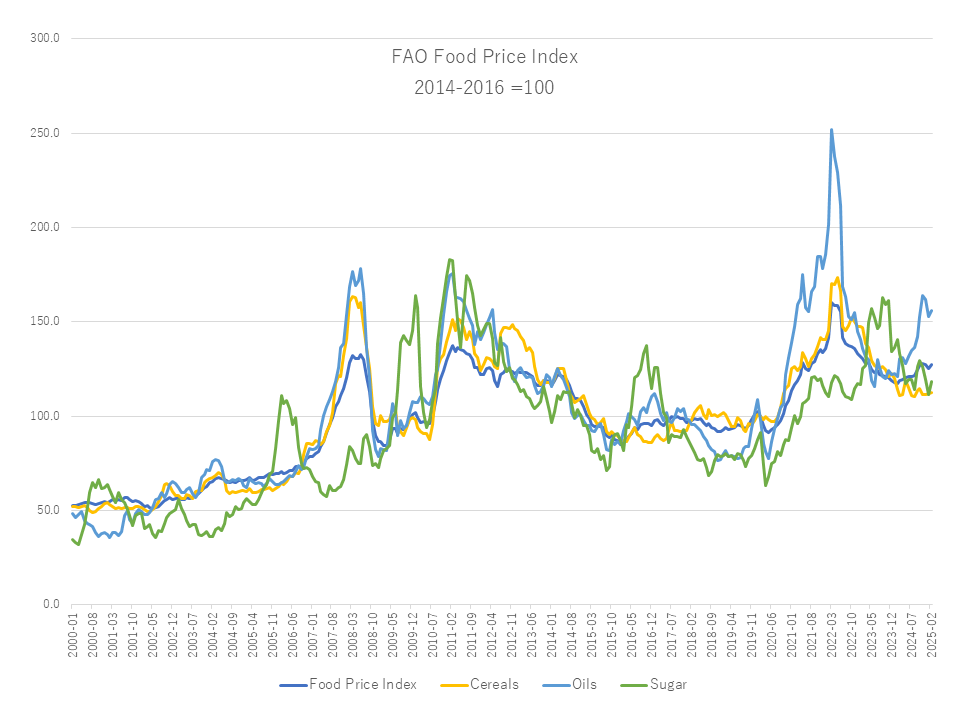Pick Up
1230. World Food Price Index for March 2025

1230.World Food Price Index for January 2025
The Food and Agriculture Organization of the United Nations (FAO) released the World Food Price Trends on April 4. The value for March 2025 averaged 127.1 points, almost unchanged from February. Declines in the cereal and sugar price indexes offset increases in the meat and vegetable oil price indexes, and the dairy price index was stable. Overall, the price index was 6.9% higher than the same level a year ago, but 20.7% lower than the peak in March 2022.
The cereal price index was at 109.7 points in March, down 2.6% from the previous month and 1.1% year-on-year. World wheat prices fell in March as concerns over crop conditions eased in some of the major exporting countries in the Northern Hemisphere, while uncertainty around rising trade tensions weighed on market sentiment. However, the decline was mitigated by currency fluctuations, increasing supply pressures in the Russian Federation, and Turkey's lifting of wheat import quotas. After several consecutive months of increases, world corn prices also fell in March. This reflected improved crop conditions due to recent rains in Brazil, the start of harvest in Argentina, a bearish outlook for the next season in the United States, lower than expected import demand from China, and concerns over trade policy changes in various countries. The FAO All Rice Price Index fell 1.7% in March, as export prices came under downward pressure due to weak import demand and abundant exportable supplies.
The vegetable oil price index rose 3.7% month-on-month and remained significantly higher (23.9%) than a year ago. The continued rise in the index was driven by higher prices for palm oil, soybean oil, rapeseed oil, and sunflower oil. International palm oil prices rose for the second consecutive month, mainly due to continued tight supplies in major producing countries in Southeast Asia, with production at seasonally low levels. Meanwhile, global soybean oil prices rose due to its price competitiveness relative to other oils and solid global import demand, despite weak demand from the biofuel sector, especially from the United States. International prices for rapeseed and sunflower oil have also risen since February, reflecting a combination of declining supplies from major exporting countries and firmer global import demand.
Sugar prices fell 1.4% from February and 12.3% from a year ago in March. The decline was mainly due to signs of weakening global demand, which eased concerns about tight global sugar supplies. In addition, recent rains in the main cane-growing regions of southern Brazil after a prolonged period of dry weather further contributed to the decline in world sugar prices. However, worsening production prospects in India and concerns about the overall outlook for Brazil's sugarcane harvest continued to exert upward pressure on prices, limiting the monthly decline in March.
Contributor, IIYAMA Miyuki, Information Program
